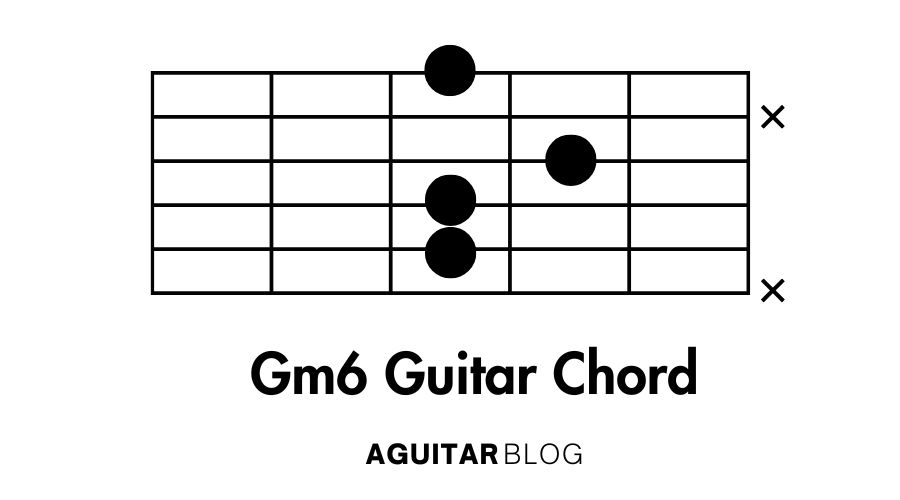The Gm6 guitar chord (G Minor 6) is a beautiful, complex chord that blends the somber tone of a minor chord with the added warmth of the sixth. It’s perfect for jazz, blues, and contemporary music, offering a unique flavor to your progressions.
What is the Gm6 Guitar Chord?
The Gm6 chord is a minor sixth chord that combines the G minor triad (G, Bb, D) with the added sixth note (E). This gives it a slightly melancholic, yet rich and sophisticated sound.
Notes in the Gm6 Chord:
- Root: G
- Minor Third: Bb
- Perfect Fifth: D
- Major Sixth: E
This combination creates a chord that is smooth and jazzy but still retains the emotional depth of a minor chord.
How to Play the Gm6 Guitar Chord

Open Gm6 Chord (Simplified Version):
- Index finger: Place on the 1st fret of the A string (5th string).
- Middle finger: Place on the 3rd fret of the D string (4th string).
- Ring finger: Place on the 3rd fret of the G string (3rd string).
Strum only the A, D, and G strings for the Gm6 sound.
Barre Chord Shape for Gm6 (Root on the 3rd Fret):
- Index finger: Barre all strings on the 3rd fret.
- Ring finger: Place on the 5th fret of the D string (4th string).
- Middle finger: Place on the 4th fret of the G string (3rd string).
- Pinky finger: Place on the 5th fret of the B string (2nd string).
Strum all six strings for the full, rich sound of Gm6.
Video Tutorial Gm6 Guitar Chord
For visual learners, a step-by-step video tutorial can make mastering the Gm6 Guitar Chord much easier. Here’s a helpful guide for you:
Common Mistakes and Tips for Playing the Gm6 Guitar Chord
Common Mistakes:
- Muted Notes: Ensure that each note rings out clearly, especially in the barre chord version.
- Inconsistent Pressure: Barre chords require consistent finger pressure; ensure you’re pressing firmly across all strings.
- Strumming Muted Strings: Be mindful of your strumming hand and avoid accidentally muting strings.
Tips for Success:
- Start with the open version to get comfortable with the chord before trying the barre shape.
- Practice transitioning between Gm6 and related minor chords like Gm, Dm, or Am for smoothness.
- Focus on keeping your fingers relaxed and your hand posture correct to avoid muted strings.
Chord Progressions Featuring the Gm6 Chord
Common Progressions:
- Gm6 – D7 – Gm6 – C7: A jazzy and soulful progression.
- Gm6 – Cm7 – F7 – Bbmaj7: A common jazz progression that adds sophistication.
- Gm6 – Abmaj7 – Gm6 – F7: Adds a unique flavor to blues or pop ballads.
Songs Featuring the Gm6 Chord
- “Summertime” by George Gershwin
- “Ain’t No Sunshine” by Bill Withers
- “Blue Bossa” by Kenny Dorham
Practice Tips for the Gm6 Chord
- Strengthen Your Fingers: Barre chords can be difficult for beginners, so spend time building finger strength.
- Work on Transitions: Move between Gm6 and other minor chords to make transitions smoother.
- Focus on Timing: Use a metronome to practice switching between chords at a consistent tempo.
Conclusion
The Gm6 guitar chord is an expressive, soulful addition to your chord library. Its minor, jazzy sound adds richness and complexity to your playing, making it perfect for both improvisation and structured progressions. With practice and creativity, you’ll be able to seamlessly incorporate it into your music.
